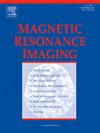Neuroimaging biomarkers of neuroprotection: Impact of voluntary versus enforced exercise in Alzheimer's disease models
IF 2
4区 医学
Q2 RADIOLOGY, NUCLEAR MEDICINE & MEDICAL IMAGING
引用次数: 0
Abstract
Exercise is a promising strategy for preventing or delaying Alzheimer's disease (AD), yet its mechanisms remain unclear. We investigated how exercise influences brain structure, function, and behavior in a familial AD model. Mice underwent voluntary, voluntary plus enforced exercise, or remained sedentary. Neuroimaging included in vivo manganese-enhanced MRI (MEMRI). perfusion, and ex vivo diffusion MRI to assess morphometry, activity, cerebral blood flow (CBF), microstructural integrity and connectivity.
Both exercise regimens induced structural and functional brain adaptations while reducing anhedonia. Voluntary exercise increased cortical and limbic volumes, particularly in the hippocampus, cingulate, and entorhinal cortex, supporting cognitive and emotional regulation. Adding enforced exercise influenced subcortical and sensory regions, including visual, motor and associative areas, supporting sensory-motor integration. MEMRI revealed increased activity in sensorimotor, limbic, and associative cortices, with voluntary exercise enhancing limbic and associative regions, and enforced exercise strengthening sensorimotor and subcortical circuits.
White matter integrity improved in memory-associate pathways such as the corpus callosum, cingulum, and hippocampal commissure. Synaptic remodeling was observed in the cingulate cortex, anterior thalamic nuclei, and amygdala. Voluntary exercise enhanced CBF in the motor cortex and hippocampus, while enforced exercise limited these increases.
Connectivity analyses revealed exercise-responsive networks spanning the cingulate cortex, entorhinal cortex, anterior thalamic nuclei, and basolateral amygdala, and associated tracts. Graph analyses linked running distance with increased thalamic, brainstem, and cerebellar connectivity, associating exercise intensity with plasticity.
These findings highlight the ability of chronic exercise to modulate neuroimaging biomarkers through distinct but complementary pathways, reinforcing its potential as a neuroprotective intervention for AD.

神经保护的神经成像生物标志物:阿尔茨海默病模型中自愿与强制运动的影响
运动是预防或延缓阿尔茨海默病(AD)的一种有希望的策略,但其机制尚不清楚。我们在家族性AD模型中研究了运动如何影响大脑结构、功能和行为。小鼠分别进行了自愿运动、自愿加强制运动或久坐不动。神经影像学包括体内锰增强MRI (MEMRI)。灌注和体外扩散MRI来评估形态测量、活动、脑血流量(CBF)、微结构完整性和连通性。两种运动方案都能在减少快感缺乏的同时诱导大脑的结构和功能适应。自愿运动增加了皮质和边缘体积,特别是海马体、扣带皮层和内嗅皮层,支持认知和情绪调节。增加强制锻炼影响皮层下和感觉区域,包括视觉、运动和联想区域,支持感觉-运动整合。MEMRI显示感觉运动、边缘和联合皮层的活动增加,自愿运动增强边缘和联合区域,强制运动增强感觉运动和皮层下回路。记忆相关通路如胼胝体、扣带和海马体的白质完整性得到改善。在扣带皮层、丘脑前核和杏仁核中观察到突触重构。自愿运动增强了运动皮层和海马体的CBF,而强制运动限制了这些增加。连通性分析显示,运动反应网络跨越扣带皮层、内嗅皮层、丘脑前核、杏仁核基底外侧和相关束。图表分析表明,跑步距离与丘脑、脑干和小脑的连通性增加有关,运动强度与可塑性有关。这些发现强调了慢性运动通过不同但互补的途径调节神经成像生物标志物的能力,增强了其作为AD神经保护干预的潜力。
本文章由计算机程序翻译,如有差异,请以英文原文为准。
求助全文
约1分钟内获得全文
求助全文
来源期刊

Magnetic resonance imaging
医学-核医学
CiteScore
4.70
自引率
4.00%
发文量
194
审稿时长
83 days
期刊介绍:
Magnetic Resonance Imaging (MRI) is the first international multidisciplinary journal encompassing physical, life, and clinical science investigations as they relate to the development and use of magnetic resonance imaging. MRI is dedicated to both basic research, technological innovation and applications, providing a single forum for communication among radiologists, physicists, chemists, biochemists, biologists, engineers, internists, pathologists, physiologists, computer scientists, and mathematicians.
 求助内容:
求助内容: 应助结果提醒方式:
应助结果提醒方式:


